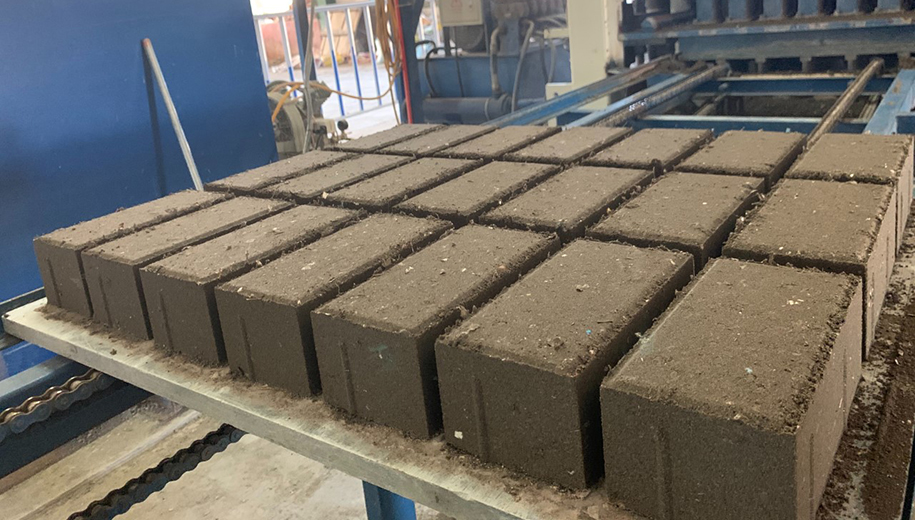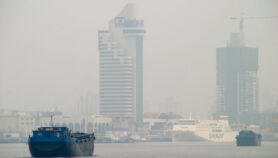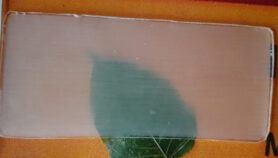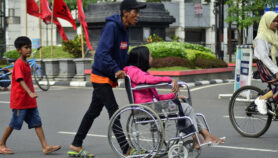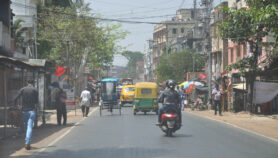Send to a friend
The details you provide on this page will not be used to send unsolicited email, and will not be sold to a 3rd party. See privacy policy.
[MANILA] Crisis spawns an inventive response as ash, spewing out of the Taal volcano on Luzon island in the Philippines, is being turned into cheap and good quality bricks.
After lying dormant for 43 years, Taal volcano in Batangas province suddenly erupted on 12 January, covering the surrounding towns with grey, powdery ash that reached Metro Manila some 80 kilometres away. That left residents and local governments with the task of clearing up tonnes of ash, several inches thick in some areas.
One of those heavily affected areas, Biñan City in Laguna province, saw value in collecting the ash and turning it into bricks rather than piling it up somewhere. And now they are offering their simple technology to other towns where the ash has been causing visibility issues and affecting those with compromised health.
“If tests can prove that the concrete mix with volcanic ash can have a strength of more than 21 MPa, then it can be used for load-bearing applications such as in beams and columns”
Gerard Ronquillo
Biñan City Mayor Arman Dimaguila is calling on residents and other local governments to collect the ash and bring it to the city-owned Materials Recovery Facility (MRF) to be processed into bricks.
It helped greatly that the MRF, functional in Biñan City since 2017, has been processing plastic waste into eco-bricks as a waste management solution. The MRF has the capacity to produce 5,000 bricks a day.
Fernando Villanueva, supervisor at the MRF, tells SciDev.Net that after some experimentation, it was established that volcanic ash mixed with shredded plastic, sand and cement made good bricks.
Initial attempts at making bricks from pure volcanic ash were not successful as the bricks cracked during the curing process. Trial and error methods showed that the ideal proportion was 40 per cent volcanic ash, 30 per cent shredded plastic waste, 20 per cent white sand, and 10 per cent cement.
Villanueva says that, following compressive strength tests, it was determined that bricks made with volcanic ash were as much as 60 per cent sturdier than locally available bricks. It was also a way to get rid of plastic waste.
Rodelio Lee, head of the city environment and national resources office of Biñan tells SciDev.Net that MRF’s original product, eco-bricks made from shredded plastic, was already 20—50 per cent sturdier than locally available bricks.
“Both the eco-bricks and volcanic bricks are cheaper than commercial bricks,” Lee says. “An eco-brick costs about US$0.20, while the volcanic brick is even cheaper at about US$0.10. A commercial brick of the same size costs about US$0.40.”
According to Lee, various companies and entities have shown interest in buying the volcanic bricks. Mayor Dimaguila announced that the proceeds of sales will be given to support rehabilitation work in areas affected by the Taal eruption.
“This idea of mixing volcanic ash to form concrete is not new as it has been used for ages,” says fire engineer expert Gerard Ronquillo. “Roman structures are the best proof of how durable this material is and how it continues to withstand the test of time”.
While the current suggested use is for pavement such as sidewalks, Ronquillo says “if tests can prove that the concrete mix with volcanic ash can have a strength of more than 21 MPa (megapascals or the measurement of concrete’s strength), then it can be used for load-bearing applications such as in beams and columns”.
Lee says the bricks will be subjected to further refinement. The Department of Science and Technology (DOST) has already agreed to carry out free testing and improvement. Its Standards and Testing Division said that it will conduct mechanical, physical and chemical testing on the bricks to learn more of its chemical composition and what processes are needed for a safe and even more durable product.
“The future plan is to produce hollow blocks from volcanic ash,” Lee says.
This piece was produced by SciDev.Net’s Asia & Pacific desk.


